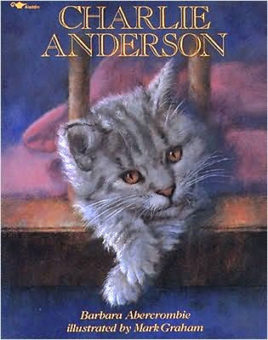Picture Books Are Perfect for Middle Schoolers
This is the first of three articles. See links at the end of this post for Part 2 and Part 3.
PART ONE
By Jennifer Sniadecki and Jason DeHart

Jennifer
As we introduce our three-part series of articles focusing on the use of picture books with older readers, Jennifer shares a teaching experience:
The data meeting went something like this…
Principal: Let’s take a look at ELA. The first standard is figurative language. What was the focus?

Jason
Teacher 1: We focused on similes and metaphors, but also worked with imagery using poetry. The test last year was heavy on poetry.
Teacher 2: Yes, and also alliteration and personification. Students use alliteration in writing pretty well.
Principal: Wow. Jennifer? Your students received mostly fours (scores 1-4). What did you do?
Me: I read picture books every day. Picture books are perfect for studying figurative language. I can pretty much meet any standard using picture books in the classroom, and kids love them!
Principal: I’d like to hear more about that. Don’t the kids think picture books are for babies?
Me: Yes, most people think that…at first. I show my students how those “easy” books are not that easy, but also make learning things like figurative language easier in middle school. Once they catch on, students ask for the read aloud if I forget. It really does help them to understand harder standards.
Principal: We need to talk about this more later.
I remember thinking, “Finally!” People can see from the data that using picture books in middle school is actually worthwhile and engaging for the learners. I told myself that I would keep using picture books in class and that I had proof that my “fun” method worked.
Why picture books belong in middle school
We posit that there are several reasons to use picture books in the middle school classroom; in this segment, we focus on student engagement.
“…the use of picture books increases motivation greatly for students of this [middle school] age.” (Fitzgerald, p.3)
Students at ages 9-13 still want to hear their teachers read aloud, want to sit on the rug, want to engage in stories – even if they feign reluctance at first, reading a picture book is a powerful time for all children.
After the data meeting just recounted, I (Jennifer) was asked to share in classrooms – to model what I was doing to see if other teachers wanted to give reading picture books a chance. The first class I visited was a 7th grade ELA group who generally did not like reading time. Even with silent choice reading time, these students didn’t spend time reading. Why?
I interviewed the students briefly. The volunteers said they couldn’t focus, they didn’t have enough time to get into the book, and/or they didn’t have any good books to read. I told them I brought a few books with me, and asked them to choose one for that day’s lesson.
“Why’d you bring baby books?” One girl yelled out.
“Yeah. We don’t read those,” agreed another girl.
“Hey! Let her try. Can we sit on the floor?” a boy asked.
The teacher’s worried face became one of grave concern. Would these students waste my time? Would they laugh at me? Would they learn anything today?
I said, “Sure – IF you listen to the story and participate.”

It’s a parallel story and requires quite a bit of inferring on the part of the reader.
The students did listen and participate, asking questions and making inferences and predictions throughout the read aloud. I was happy with the discussion this little “baby book” started.
I called the first girl over as the class headed back to their seats. I asked her, “So, do you still think this is a baby book?”
“No way,” she said. “Babies wouldn’t be able to understand that.”
The boy who told the others to give it a chance approached me as I left the room and followed me into the hallway. “Thanks for reading to us today,” he said.
As an instructional leader, if there’s anything I’ve learned over the years, it’s that education is about the students and their needs. These 7th graders were still kids, ages 11-13, and, developmentally, needed a teacher to pay attention to them and their reading in a different way. The read aloud of a well-crafted picture book not only motivated them, it helped them to discover that they could (and should) discuss books and learn with a purpose during reading time.
Why picture books work in middle school
In chapter one of The Power of Picture Books: Using Content Area Literature in Middle School by Mary Jo Fresch & Peggy Harkins, we find the main reason for using picture books in the middle school classroom:
“Within the pages of a picture book is the potential to entice, intrigue, and motivate…middle school readers as they vicariously experience times and places that make up their past, influence the present, and may have an impact upon their futures.” (Farris & Fuhler, 1994, p. 47) What textbook can offer the same promise?”
(Fresch & Harkins, 2009, p.15)
I don’t know of an engaging textbook; picture books are perfect for middle school classrooms. The use of pictures and text, the deceptive simplicity, and the attractive layout of picture books act as a prelude or invitation to other reading experiences, and offer much to entice readers – even at the middle level.
NOTE: To build on this look at the power of picture books, this article series includes both an in-service teacher and instructional leader’s observations (that’s Jennifer) and reflections from a former middle school teacher and current reading professor (that’s Jason).
Feature image: YouTube, Charlie Anderson Read by Mrs. Arensdorf.
( Read Part 2 / Read Part 3 )
Jennifer Sniadecki is a school librarian, teacher, and professional development presenter in South Bend, Indiana. She is an avid reader and will read anything her colleagues recommend. Jennifer’s current passion is promoting her favorite authors’ upcoming books via social media. Find more read-aloud and picture book ideas at her blog, www.readingteacherwrites.com.
Jason D. DeHart is an assistant professor of reading education at Appalachian State University. He taught 8th grade language arts for eight years in Cleveland, Tennessee. DeHart’s research interests include multimodal literacy, film and graphic novels, and literacy instruction with adolescents. His work has recently appeared in SIGNAL Journal, English Journal, and The Social Studies.
NOTE: Since this article was published, Jason has returned to his first love, the secondary classroom. See all of his MiddleWeb articles here.





























Wonderful post! I started using picture books with middle schoolers when I trained in six traits of writing many years ago. But now I use them for everything and they really do make a difference. Thanks for promoting the picture book love, Jennifer!
Pls advise on picture books for a 12 year old boy.
Great blog! Picture books are the best for middle grade and middle school students! By promoting picture book love for this age group, I’m hoping you convince many teachers to try using them!